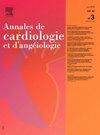Vendee(2005年、2015年和2022年),La Roche-sur-Yon省医院中心主动脉狭窄治疗的演变。
IF 0.3
Q4 Medicine
引用次数: 0
摘要
重度钙化性主动脉瓣狭窄(AS)是老年人最常见的瓣膜性心脏病,未经干预预后较差。2002年引入的经导管主动脉瓣植入术(TAVI)深刻地重塑了治疗策略。本研究旨在评估La Roche - sur - Yon部门医院中心在三个时间段内患者管理和结果的变化:2005年(前TAVI时代),2015年(早期TAVI整合)和2022年(TAVI主导时代)。方法我们进行了一项回顾性、单中心观察性研究,纳入了所有因症状性严重AS或左室射血分数降低而住院的患者。分析临床特征、手术风险评分、管理策略和一年的结果。结果2005年至2022年,接受SAS治疗的患者数量增加了158%(2005年65人,2015年136人,2022年168人)。平均年龄(2022年79岁)和男性比例(60%)保持稳定。治疗策略发生了显著变化(p < 0.001):手术在2005年占主导地位(67%),而TAVI在2022年成为最常见的治疗方法(55%),其次是手术(21%)和药物治疗(24%)。手术治疗的患者越来越多地被选择,中位EuroSCORE II从3.95%(2005年)下降到1.1%(2022年)。2022年手术后一年全因死亡率为0%,TAVI后为5.9%(低于2015年的28.8%,p = 0.008),药物治疗后为68% (p < 0.001)。内科组的心力衰竭再住院率也更高(33% vs TAVI后的6%,手术后的2%;p = 0.016)。未出席心脏小组会议的患者比例显著下降(2022年为17%,2015年为35%;p < 0.001)。然而,等待时间仍然很长(从入院到MDT会议的中位数为70天,加上手术前41天)。结论TAVI的整合已经深刻地改变了我中心AS的管理,现在是主导策略,显著改善了1年预后。接受过医疗治疗的患者的预后仍然很差,这凸显了减少延误和简化护理途径的必要性。本文章由计算机程序翻译,如有差异,请以英文原文为准。
Évolution de la prise en charge du rétrécissement aortique serré au centre hospitalier départemental de La Roche-sur-Yon, Vendée (2005, 2015 et 2022).
Background
Severe calcific aortic stenosis (AS) is the most common valvular heart disease in the elderly and carries a poor prognosis without intervention. The introduction of transcatheter aortic valve implantation (TAVI) in 2002 profoundly reshaped therapeutic strategies. This study aimed to evaluate changes in patient management and outcomes at the Departmental Hospital Center of La Roche‑sur‑Yon over three time periods: 2005 (pre‑TAVI era), 2015 (early TAVI integration), and 2022 (TAVI‑dominant era).
Methods
We conducted a retrospective, single-center observational study including all patients hospitalized for symptomatic severe AS or reduced left ventricular ejection fraction. Clinical characteristics, operative risk scores, management strategies, and one-year outcomes were analyzed.
Results
Between 2005 and 2022, the number of patients managed for SAS increased by 158% (65 in 2005, 136 in 2015, 168 in 2022). Mean age (79 years in 2022) and male proportion (60%) remained stable. Therapeutic strategies shifted markedly (p < 0.001): surgery predominated in 2005 (67%), whereas TAVI became the most frequent treatment in 2022 (55%), followed by surgery (21%) and medical therapy (24%). Surgically treated patients were increasingly selected, with a median EuroSCORE II falling from 3,95 % (2005) to 1.1% (2022). One-year all-cause mortality in 2022 was 0% after surgery, 5.9% after TAVI (down from 28.8% in 2015, p = 0.008), and 68% with medical therapy (p < 0.001). Heart failure rehospitalizations were also more frequent in the medical group (33% vs 6% after TAVI and 2% after surgery; p = 0.016). The proportion of patients not presented at the heart team meeting declined significantly (17% in 2022 vs 35% before 2015; p < 0.001). The waiting times nevertheless remained significant (median of 70 days between admission and the MDT meeting, plus 41 days before the procedure).
Conclusions
Integration of TAVI has profoundly transformed AS management in our center, now the dominant strategy with significantly improved one-year prognosis. Medically treated patients still experience poor outcomes, underscoring the need to reduce delays and streamline the care pathway.
求助全文
通过发布文献求助,成功后即可免费获取论文全文。
去求助
来源期刊
CiteScore
0.60
自引率
0.00%
发文量
68
审稿时长
6-12 weeks
期刊介绍:
Organe scientifique de référence fondé en 1951, les Annales de cardiologie et d''angéiologie abordent tous les domaines qui intéressent quotidiennement les cardiologues et les angéiologues praticiens : neurologie et radiologie vasculaires, hémostase, diabétologie, médecine interne, épidémiologie et prévention.
Les Annales de cardiologie et d''angéiologie sont indexées aux grandes bases de données et publient rapidement, et en conformité avec les normes internationales de publication scientifique, des articles en français sur la pathologie cardiaque.

 求助内容:
求助内容: 应助结果提醒方式:
应助结果提醒方式:


